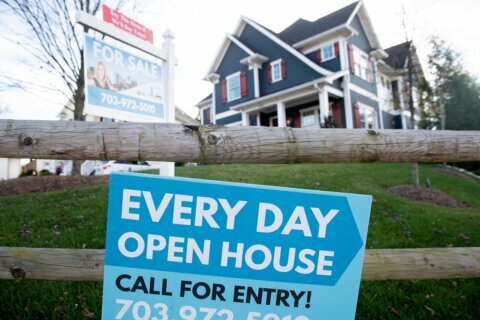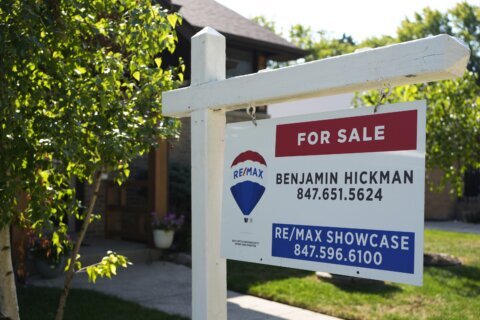If you’ve fallen in love with a new property, it’s easy to dismiss its shortcomings. That’s why, when looking at prospective new digs, it’s important to focus on the parts of the space that you don’t like and would change later on. Ask yourself, “How will I feel about this space in a decade?” You may come to realize that some design trends and characteristics — such as lackluster landscaping, a swimming pool or a noisy location — may actually be less desirable and make your dream home harder to sell in the future.
Before you make a shortsighted homebuying decision, weigh whether you’ll regret purchasing a property with these features 10 years from now.
[See: Current Design Trends That Will Date Your Home.]
1. The location. Brett Wiederhold, an agent with Royal LePage, a real estate agency in Aurora, Ontario, suggests imagining that you’re a new homeowner looking at a house in a scenic and quiet part of the country. “The drive that seemed beautiful when going to view the house is now just an inconvenience when you forgot to get milk on the way home,” he says.
If you want to buy in the countryside, look for homes that are still close enough to at least a convenience store in case you need something like cold medicine on short notice, Wiederhold says.
At the very least, try driving from your new home to work at least once, so you can get the feel of whether this is a daily route you want to be taking, possibly for years to come. If you have children, you’ll also want to make sure the school district is one that you like.
2. The neighborhood noise. Your new house may seem like it’s practically on top of a neighbor’s house. Or perhaps you might have to back your car out of your driveway onto a busy road. Maybe your prospective home is next to a loud freeway. That noise may eventually grate on your nerves, points out Nelene Gibbs, owner of Nelene Gibbs Real Estate in Virginia Beach.
“While viewing homes, there is always a lot of conversation and sometimes excitement going on, and many times, it isn’t until after the purchase they realize the vehicle noise is a real problem they hadn’t anticipated. Those quiet nights they expected to sit on the porch are now filled with auto and truck noises zooming down the road,” she says.
Gibbs says she once found a new house for a family after they decided they lived too close to the local firehouse. “Every time there was an emergency call, they would be jolted from their beds by the loud sound of sirens screaming down the road. They never thought about the noise factor when purchasing their home. Their thought was being close to the firehouse was a good thing if they ever needed them,” she says.
If you have some serious doubts about the neighborhood, such as whether that firehouse is too close or whether those high-voltage power lines could hurt your family or scare off future buyers when you someday sell, talk to your realtor.
“Part of being a good real estate agent is to notice these things and point them out to the buyers, before they put an offer on the home,” says Jeff Peterson, a real estate agent who owns Excel Real Estate Consultants in Texas.
[See: 6 Home Renovations You Think Will Pay Off — But Won’t.]
3. A small number of electrical outlets. Nobody thinks about the number of electrical outlets a property has, but more people should, says Alan Guinn, a consultant who runs the Guinn Consultancy Group in Bristol, Tennessee, who has worked with numerous real estate agents.
“When considering the physical condition of the interior of the house, don’t ever think or say, ‘Oh, we can add additional electrical outlets,'” Guinn says. “And if you decide to [add outlets], you’ll find that you have to add another breaker box or another service entrance.” As a rule of thumb, some experts suggest having outlets in rooms every six feet. Older homes, however, aren’t likely to have that many, so make sure to think about what chargers and electronics you may be plugging into the walls.
Peterson also cautions that you’re unlikely to do a lot of work to add electrical outlets. “The buy, fix, flip shows on TV always look fun and interesting, but in real life it isn’t that easy,” he says. “Unless you’re willing to shell out tens of thousands of dollars for repairs, you have to do the work yourself. Many people find that they don’t really have the time, energy or funds to complete the renovations themselves.”
4. The limited closet space. If you’re contemplating investing in a home without walk-in closets or storage space, you should reconsider your decision. “Don’t buy a house without enough closet space,” Guinn says. “You will immediately need more.”
If you think the closets seem a little small now, how are you going to feel when you have your belongings in them? And how are you going to feel years from now, when you’ve purchased more clothes and toys for the kids? Compare the closet space with what you have now, and if the closets are comparable or worse, try to come up with an action plan. Maybe, for instance, the basement is spacious enough that you’ll want to keep a lot of items down there.
5. The swimming pool. “People with young families forget that buying a house with a pool will require putting a safety fence around the pool or other precautionary steps to ensure the safety of small children,” Peterson says. “I’ve heard multiple times that the buyers wish they hadn’t bought a home with the pool and regret it constantly.”
And don’t forget about the cost of maintaining a swimming pool. According to the home improvement website Fixr.com, the average monthly payment during summer months to maintain a pool is $750, since you’ll be looking at expenses such as hiring a professional pool service and the cost of chemicals that you’ll use to keep the water clear.
6. The poor landscaping. Do the trees seem somewhat close to your house? In another 10 years, they may be pressing against your home. And does it seem as if there will be a lot of upkeep? Some yard issues can become major hassles, from trees that are too close to the house or drainage problems that lead to flooding. Gibbs remembers a client buying a house with a yard that always seemed to be wet. It felt as if you were walking on a sponge, instead of grass.
“It was only a short time later that the trees in their yard actually began to fall,” Gibbs says. The house sits on three acres of soggy land with many trees that have roots rotting in the soil. So far, 15 trees have toppled over. “The cost for tree removal was an ongoing major expense they faced owning this home. Once, they even had a very large tree actually fall across their family van, crushing it,” Gibbs says.
[See: 8 Home Remodeling Projects That Are Worth the Money.]
Fortunately, many of these problems can be avoided with some forethought. You need to get to know this house and factor in potential reasons you may someday be disenchanted with the property. Because if you only find yourself looking at the home’s good qualities, that’s where you can go wrong. Most people run into issues, because “they walk in, fall in love and buy the house,” Gibbs says.
More from U.S. News
The Little Things: Small Decisions That Can Impact Your Home’s Sale Price
10 Unorthodox Ways Your Real Estate Agent May Market Your Home
10 Ways Your Home Can Pay You Money
6 Things About Your New House You Will Hate in 10 Years originally appeared on usnews.com







